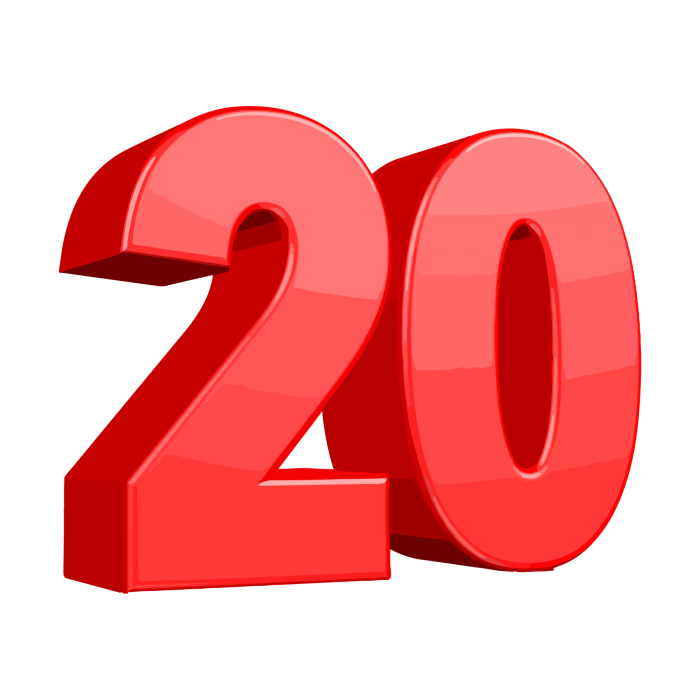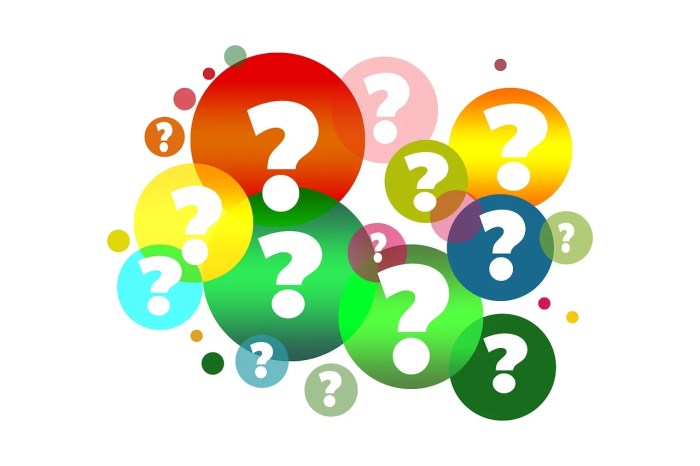Find your own learning style make learning more easy and effective. Learning is a journey, not a race, and understanding your preferred methods can significantly impact how easily and effectively you absorb new information. This guide explores various learning styles, from visual and auditory to kinesthetic and reading/writing, and provides practical strategies to tailor your learning experience to your unique strengths.
We’ll delve into personalized learning plans, effective study techniques, and creating a supportive environment. Discover how to enhance your focus, manage your time, and overcome learning obstacles. Ultimately, this exploration aims to equip you with the tools and knowledge to unlock your full learning potential.
Understanding Learning Styles

Unlocking your learning potential often hinges on understanding how you best absorb and process information. Different learning styles exist, and recognizing yours can significantly improve your study habits and overall learning experience. This section delves into the various learning styles, highlighting activities and resources tailored to each, and providing a simple self-assessment tool to help you identify your dominant style.
Different Learning Styles
Learning styles represent preferred ways of gaining knowledge. Recognizing your learning style is a crucial step toward optimizing your study strategies and academic performance. There are four common learning styles: visual, auditory, kinesthetic, and reading/writing.
- Visual Learners thrive on seeing information. Visual aids like diagrams, charts, and videos enhance their understanding. They often prefer to read information out loud or create visual representations of concepts. Examples of resources include mind maps, flowcharts, and online educational videos. Activities like drawing diagrams, creating visual summaries, or using flashcards are highly effective for visual learners.
- Auditory Learners absorb information best through listening. Lectures, discussions, and audio recordings are beneficial. They often benefit from repeating information out loud or having someone explain concepts to them. Resources include podcasts, audiobooks, and lectures. Activities like listening to summaries, participating in group discussions, or recording their own explanations can greatly assist auditory learners.
- Kinesthetic Learners learn through doing. Hands-on activities, experiments, and physical demonstrations are essential to their understanding. They often prefer interactive simulations or real-world applications. Resources include lab experiments, simulations, and interactive online tools. Activities like building models, conducting experiments, or acting out scenarios are highly effective.
- Reading/Writing Learners prefer absorbing information through reading and writing. They excel at taking notes, summarizing information, and creating Artikels. They often find textbooks and articles particularly helpful. Resources include textbooks, articles, and research papers. Activities like taking detailed notes, writing summaries, and creating Artikels can greatly enhance their understanding.
Identifying Your Dominant Learning Style
Determining your dominant learning style is a key to maximizing your learning effectiveness. It allows you to adapt your study strategies to better align with your natural preferences. There’s no single definitive test, but various methods can help. A common approach involves reflecting on your learning preferences and past experiences.
- Self-Reflection: Consider how you typically learn best. Do you prefer visual aids, discussions, hands-on activities, or reading and writing? Reflect on past learning experiences and identify the methods that worked best for you.
- Observation: Pay attention to your learning habits. Do you naturally gravitate toward certain types of learning materials? Do you find yourself easily absorbing information through a specific method? These observations can provide insights into your preferred learning style.
Learning Style Questionnaire
This simple questionnaire can help you identify your learning preferences. Answer honestly, and reflect on the patterns in your responses.
Figuring out your learning style can make learning way easier and more effective. It’s all about finding what works best for you. For example, some people thrive on visual aids, while others prefer hands-on activities. Similarly, understanding the mindset of wealth can help us in our own lives. Check out this interesting article on 5 things about rich people that the middle class doesn’t understand to see how different approaches to life can influence success.
Ultimately, recognizing your unique learning style and applying that knowledge is key to achieving your goals.
| Question | Possible Responses |
|---|---|
| How do you prefer to take notes? | Visual aids, audio recordings, hands-on, writing |
| What learning materials do you find most helpful? | Videos, discussions, experiments, books |
| How do you remember information best? | Seeing it, hearing it, doing it, writing it |
Comparison of Learning Styles
Understanding the strengths and weaknesses of each learning style can help you tailor your learning strategies.
| Learning Style | Strengths | Weaknesses |
|---|---|---|
| Visual | Strong visual memory, ability to see patterns, improved comprehension through diagrams and images | May struggle with abstract concepts, potentially prone to missing verbal cues, less engaged with lectures. |
| Auditory | Strong verbal memory, good at understanding complex information through discussions and lectures, often engaged in group settings. | May struggle with written material, may be easily distracted by noisy environments. |
| Kinesthetic | Strong hands-on learning, understanding concepts through practical application, great at problem-solving through experimentation | Can be time-consuming, may require access to resources for hands-on learning, less efficient for large volumes of information. |
| Reading/Writing | Strong analytical skills, great at absorbing and organizing information through text, can focus on details. | Can be challenging when dealing with complex visuals, may be less interactive in group learning environments. |
Personalized Learning Strategies
Unlocking your full learning potential involves tailoring your approach to your unique learning style. Understanding your preferred methods of absorbing information, processing it, and retaining it is crucial for creating a learning experience that’s both engaging and effective. This section explores personalized learning strategies, demonstrating how to adapt learning materials, design a personalized plan, and optimize focus and concentration.By understanding your learning style and adapting your learning strategies, you can make the process more efficient and enjoyable, leading to better results.
This approach is not just about convenience; it’s about maximizing your brain’s capacity to learn and retain information.
Adapting Learning Materials to Suit Individual Learning Styles
Different learning styles require different approaches to materials. For visual learners, diagrams, charts, and videos are essential. Auditory learners benefit from lectures, discussions, and audiobooks. Kinesthetic learners thrive on hands-on activities, experiments, and physical demonstrations. A personalized approach involves selecting materials that match your preferred learning style.
Figuring out your learning style can make learning a breeze. Understanding how you absorb information most effectively is key to unlocking your potential. However, even with the most effective learning style, it’s important to acknowledge that consistent happiness, as explored in this insightful piece on why its impossible to be consistently happy , is a complex emotional journey.
Ultimately, knowing your learning style empowers you to engage with the world in a more fulfilling way, making learning a continuous and enriching process.
For example, if you are a visual learner, you might find diagrams and illustrations more helpful than just reading text. Or, if you are an auditory learner, you might find it easier to learn by listening to lectures or podcasts.
Creating a Personalized Learning Plan
A personalized learning plan should incorporate your identified learning style and preferences. Consider your preferred pace, preferred learning environment, and the types of activities that motivate you. For instance, a plan for a visual learner might include using mind maps, watching educational videos, and creating visual representations of concepts. For auditory learners, the plan might involve attending lectures, joining study groups, or listening to educational podcasts.
Techniques to Improve Focus and Concentration During Learning
Maintaining focus and concentration is key to effective learning. Techniques such as the Pomodoro Technique, which involves working in focused intervals with short breaks, can significantly improve concentration. Mindfulness exercises can also help cultivate a state of present awareness, enhancing focus and reducing distractions. Creating a dedicated workspace free from interruptions is another important aspect of improving focus and concentration.
Comparing the Effectiveness of Different Learning Environments
The effectiveness of a learning environment depends significantly on the individual. A quiet environment is often ideal for deep concentration and focused learning, while a noisy environment might work better for certain tasks or social learners who prefer collaboration. Group learning environments can foster discussion and collaboration, but individual learning allows for focused concentration and independent thought. Ultimately, the best environment is the one that supports your specific needs and learning style.
Learning Resources Categorized by Learning Style, Find your own learning style make learning more easy and effective
| Learning Style | Books | Websites | Apps |
|---|---|---|---|
| Visual | “The Visual Learner’s Handbook” | Khan Academy | Quizlet |
| Auditory | “The Auditory Learner’s Guide” | Coursera | Podcasts |
| Kinesthetic | “Hands-on Learning Activities for Students” | Interactive Simulations | Virtual Labs |
Note: This table provides examples of resources; many other options are available. The best resources for you will depend on your specific learning style and the subject matter.
Enhancing Learning Effectiveness
Unlocking your full learning potential involves more than just understanding your style. It’s about crafting an environment that nurtures focus, fuels engagement, and empowers you to master the material. This process requires a proactive approach, combining effective strategies with a strong sense of self-discipline. Let’s explore ways to optimize your learning experience.Creating a Conducive Learning Environment fosters focus and engagement.
A dedicated study space free from distractions is crucial. Minimize interruptions from social media, noisy environments, or other potential disruptions. Personalize your space with elements that promote a sense of calm and well-being. Ambient music, soft lighting, and comfortable seating can significantly enhance focus and concentration. Consider using noise-canceling headphones or earplugs if necessary.
Creating a Dedicated Study Space
Establishing a designated study area fosters a clear mental association between that space and focused learning. Ensure the space is well-organized, with all necessary materials readily available. Maintaining a clutter-free environment minimizes visual distractions and promotes a sense of calm. Personalizing the space with elements that evoke a positive learning atmosphere, such as inspirational quotes or calming artwork, can be beneficial.
Interactive and Enjoyable Learning Methods
Interactive learning methods transform passive absorption into active participation. Engaging with the material through activities like discussions, group projects, simulations, or real-world applications makes learning more enjoyable and memorable. These activities also help in better understanding and retaining information.
Managing Time and Prioritizing Tasks
Effective time management is a critical skill for successful learning. Planning your study schedule, breaking down large tasks into smaller, manageable chunks, and prioritizing tasks based on importance and deadlines are essential steps. Consider using tools like calendars, to-do lists, or time management apps to keep track of your progress. Prioritizing tasks based on deadlines, importance, and complexity helps avoid procrastination and maintain momentum.
Motivation and Self-Discipline
Motivation and self-discipline are powerful catalysts for effective learning. Setting realistic goals, celebrating milestones, and maintaining a positive mindset are crucial for sustained motivation. Develop a system of rewards for achieving learning milestones to reinforce positive behavior and maintain motivation. Building self-discipline involves consistently adhering to your study schedule, avoiding procrastination, and maintaining a positive attitude towards learning.
Overcoming Learning Challenges
Learning challenges are inevitable. Addressing them head-on is crucial. Break down complex concepts into smaller, more manageable parts. Seek clarification from instructors, tutors, or peers when needed. Identify your learning weaknesses and develop strategies to address them.
Don’t be afraid to ask for help; seeking support is a sign of strength, not weakness. Don’t hesitate to ask for support or guidance when faced with a challenge. Seeking clarification from peers, tutors, or instructors can prove beneficial.
Learning Techniques and Benefits
Different learning techniques can be tailored to specific learning styles. A well-rounded approach is often beneficial. This table illustrates some common learning techniques and their associated benefits:
| Learning Technique | Benefits |
|---|---|
| Spaced Repetition | Improved long-term memory retention, reduced forgetting |
| Active Recall | Enhances understanding and memory, strengthens critical thinking skills |
| Mind Mapping | Visual representation of ideas, facilitates organization and understanding |
| Flashcards | Effective for memorizing facts and vocabulary, promotes active recall |
| Teaching Others | Deepens understanding, identifies knowledge gaps |
Applying Learning Styles to Specific Subjects
Unlocking the power of your learning style isn’t just about general strategies; it’s about tailoring those strategies to the specific demands of each subject. Understanding how your brain processes information in math, science, or history allows you to approach these disciplines with greater effectiveness and enjoyment. This targeted approach makes complex subjects more accessible and fosters a deeper understanding.Applying your preferred learning style isn’t about memorizing facts or formulas; it’s about actively engaging with the material in a way that resonates with your cognitive strengths.
This active engagement leads to more retention and a richer, more meaningful learning experience.
Math
Understanding mathematical concepts often requires a combination of logical reasoning and visualization. For visual learners, diagrams, graphs, and charts can greatly enhance comprehension. For example, representing algebraic equations graphically or using geometric models to illustrate theorems can make abstract concepts more concrete. Auditory learners can benefit from verbal explanations and discussions, while kinesthetic learners often find hands-on activities like manipulating physical models or using manipulatives helpful.
Finding your ideal learning style makes learning significantly easier and more effective. Just like how nuances in language can be incredibly difficult to translate – for example, check out how 17 Polish words cannot be perfectly translated into English, 17 polish words cannot simply translate into english – understanding how you best absorb information is key to unlocking your learning potential.
Focusing on your strengths and tailoring your approach will dramatically improve your overall learning experience.
Science
Science thrives on experimentation and observation. Visual learners will find diagrams, models, and flowcharts invaluable. For instance, illustrating the process of photosynthesis or using diagrams to depict the water cycle. Hands-on experiments, demonstrations, and field trips are particularly effective for kinesthetic learners. Audio resources, like podcasts and lectures, can provide a valuable overview of scientific principles.
Active note-taking and summarizing can aid all learners in retaining scientific information.
History
History often involves absorbing a multitude of facts and figures. Visual learners will benefit from timelines, maps, and historical images. For example, visual representations of the expansion of empires or the movement of armies. Auditory learners might benefit from listening to lectures or historical accounts, while kinesthetic learners might enjoy role-playing historical events or visiting historical sites.
Interactive Learning Activities
Engaging with material actively, regardless of subject, can significantly enhance understanding. For example, creating concept maps, debating historical events, or designing scientific experiments can turn passive learning into a dynamic process.
Visual Aids, Audio Resources, and Hands-on Experiments
Visual aids, such as diagrams, charts, and models, can make complex concepts more understandable. Audio resources, like lectures, podcasts, or audiobooks, can provide alternative perspectives and insights. Hands-on experiments and activities offer a practical application of learned principles, particularly for kinesthetic learners. These methods are not mutually exclusive and can be combined to create a well-rounded learning experience.
Subject-Specific Learning Strategies Table
| Learning Style | Math | Science | History |
|---|---|---|---|
| Visual | Graphs, diagrams, charts, geometric models | Diagrams, models, flowcharts, simulations | Timelines, maps, images, historical documents |
| Auditory | Verbal explanations, discussions, lectures | Lectures, podcasts, audio descriptions of experiments | Lectures, audio recordings of historical accounts |
| Kinesthetic | Manipulating physical models, using manipulatives, practical applications | Hands-on experiments, demonstrations, field trips | Role-playing historical events, visiting historical sites |
Learning Resources and Tools

Unlocking your learning potential hinges on choosing the right tools and resources. This section explores a diverse range of learning materials and technologies, catering to various learning styles and enhancing the effectiveness of your studies. From interactive simulations to personalized study plans, we’ll equip you with the strategies to optimize your learning journey.
Choosing Appropriate Learning Materials
Effective learning hinges on selecting resources that align with your preferred learning style. Consider the format and content that resonate most with you. Are you a visual learner who benefits from diagrams and videos? Or perhaps you prefer hands-on activities and interactive simulations. Recognizing your learning style will guide you towards resources that will maximize your comprehension and retention.
Learning Resources Categorized by Learning Style and Subject
This table provides a starting point for finding resources tailored to your learning style and subject matter. It highlights the diverse range of options available, from textbooks and online courses to interactive simulations and podcasts. Remember, this is a starting point, and further exploration is encouraged.
| Learning Style | Subject | Resource Examples |
|---|---|---|
| Visual | Mathematics | Interactive geometry software, videos demonstrating mathematical concepts, colorful diagrams and charts. |
| Auditory | History | Audio lectures, podcasts, audiobooks, recorded discussions and debates. |
| Kinesthetic | Science | Hands-on experiments, laboratory exercises, interactive simulations, building models, and creating diagrams. |
| Visual | Language Arts | Graphic organizers, mind maps, videos demonstrating literary analysis, and visual aids for comprehension. |
| Auditory | Music | Recorded lessons, music theory explanations, listening to different genres and styles of music. |
| Kinesthetic | Foreign Language | Role-playing activities, conversation partners, interactive language learning apps, and immersion programs. |
Examples of Educational Tools and Technologies
Numerous educational tools and technologies can enhance your learning experience. Interactive simulations, online quizzes, and educational games provide engaging and dynamic ways to absorb information. These tools often cater to different learning styles, providing a variety of ways to engage with the material.
Creating a Personal Library of Learning Materials
Building a personal library of learning materials is crucial. This curated collection of resources can be accessed whenever needed. It allows you to organize and prioritize materials based on your specific learning goals and preferences. This approach promotes self-directed learning and makes learning more accessible.
Tools for Personalized Study Plans and Progress Tracking
Utilizing tools designed for personalized study plans and progress tracking can significantly improve your learning efficiency. These tools allow you to schedule study sessions, monitor your progress, and identify areas needing extra attention. This proactive approach facilitates better time management and ensures you stay on track. For example, apps like Trello, Google Calendar, and various learning management systems (LMS) provide effective frameworks for managing study schedules and tracking progress.
Building a Supportive Learning Environment
Creating a supportive learning environment, whether at home or in a study group, is crucial for maximizing learning potential. A nurturing atmosphere fosters focus, reduces stress, and encourages active participation, leading to a more positive and effective learning experience. This supportive environment empowers learners to tackle challenges with confidence and resilience, unlocking their full academic potential.A conducive learning environment is not just about physical space; it’s about fostering a mindset that prioritizes understanding and collaboration.
This includes setting clear expectations, providing encouragement, and offering resources for support. Building a strong foundation for learning goes beyond textbooks and lectures; it involves the creation of a supportive system that empowers learners to thrive.
Creating a Supportive Learning Space at Home
A supportive home learning environment relies on establishing a dedicated study area free from distractions. This space should be well-lit, organized, and comfortable. Establishing a consistent routine for study time, including specific times for focused work and breaks, can greatly improve focus and productivity. Clear communication with family members about study schedules and quiet time requirements is essential.
Providing access to necessary resources, such as textbooks, notebooks, and technology, is also key to ensuring a smooth learning process.
Building a Supportive Study Group
Effective study groups rely on clear communication and shared goals. Establishing clear ground rules, such as active participation, respectful communication, and mutual support, is crucial for productive collaboration. Dividing tasks and responsibilities based on individual strengths and interests can foster a sense of ownership and engagement within the group. Regular check-ins and progress updates can help maintain momentum and address any challenges proactively.
Seeking Help and Support When Needed
Seeking help is a sign of strength, not weakness. Learning to ask for clarification or assistance when facing difficulties is essential for successful learning. Identifying trusted teachers, mentors, or peers who can provide guidance and support is vital. Utilizing available resources, such as tutoring services, online forums, or study groups, can significantly enhance understanding and progress. Actively seeking out and utilizing these resources fosters a proactive learning approach.
Effective Communication Strategies for Learning
Clear and concise communication is fundamental for effective learning, whether it’s with peers, teachers, or mentors. Active listening, asking clarifying questions, and providing constructive feedback are key communication skills for learners. Expressing needs and concerns openly and honestly creates an environment where questions are welcomed and misunderstandings can be addressed promptly. These strategies promote a healthy learning environment where everyone feels comfortable contributing and sharing ideas.
Benefits of Collaboration on Learning Projects
Collaboration on learning projects offers numerous advantages. Sharing ideas, perspectives, and approaches expands understanding and promotes diverse thinking. Working together fosters a sense of community and shared responsibility, encouraging mutual support and encouragement. Collaborative projects often lead to a more comprehensive understanding of the subject matter and improved problem-solving skills. By actively engaging in collaborative learning experiences, students develop valuable teamwork and communication skills.
Techniques for Building a Positive and Productive Learning Mindset
Cultivating a positive and productive learning mindset is essential for success. Maintaining a growth mindset, focusing on continuous improvement, and viewing challenges as opportunities for learning can greatly improve academic performance. Recognizing and celebrating accomplishments, both big and small, reinforces positive learning habits and motivates continued effort. Practicing self-compassion, understanding that setbacks are a natural part of the learning process, and fostering resilience are crucial components of a positive learning mindset.
Support Strategies Table
| Type of Support Needed | Strategies |
|---|---|
| Academic Support | Tutoring, study groups, seeking clarification from teachers, utilizing online resources |
| Emotional Support | Talking to friends and family, seeking counseling, joining support groups, practicing self-care |
| Organizational Support | Creating a dedicated study space, establishing a study schedule, utilizing organizational tools, seeking help with time management |
| Social Support | Joining study groups, collaborating with peers, building a support network, participating in social activities |
Visualizing Learning Concepts: Find Your Own Learning Style Make Learning More Easy And Effective
Unlocking the power of visual learning can transform abstract concepts into tangible, memorable insights. Visual representations, whether mind maps, charts, or infographics, provide a powerful framework for understanding complex information. This approach appeals to different learning styles and facilitates easier comprehension and retention.Visual learning strategies go beyond simply looking at pictures. They actively engage the brain by connecting abstract ideas with concrete imagery, symbols, and patterns.
This process strengthens memory pathways and fosters a deeper understanding of the subject matter.
Examples of Visual Representations of Abstract Concepts
Visual representations offer a concrete way to grasp abstract concepts. For instance, representing the concept of “supply and demand” with a graph illustrating how price changes affect quantity supplied and demanded offers a much clearer picture than a lengthy verbal explanation. Similarly, a Venn diagram illustrating the overlapping characteristics of two seemingly different ideas can highlight common ground.
A flowchart depicting the steps in a scientific method can easily show the process involved, as opposed to reading a long paragraph.
Method for Creating Mind Maps or Concept Diagrams
Creating effective mind maps or concept diagrams involves a structured approach. Start by identifying the central theme or concept. From this core idea, branch out with associated s and supporting details. Use s, short phrases, and symbols to represent these ideas. Color-coding can further enhance organization and clarity.
Employing different shapes and sizes of text can add visual emphasis to important concepts.
Use of Color-Coding and Visual Cues for Learning
Color-coding and visual cues are powerful tools for enhancing learning. Using different colors for various categories or s can visually distinguish and organize information. Highlighting key terms or phrases with a particular color can draw attention to crucial aspects. Using icons or symbols alongside text can improve understanding and recall. Color coding can also be used for emphasis in charts and graphs.
Techniques for Using Infographics and Charts for Understanding Complex Information
Infographics and charts are effective for summarizing and presenting complex data. When dealing with statistical information, bar graphs or pie charts visually display the relationships between data points. Line graphs can illustrate trends and patterns over time. Using icons, symbols, and labels effectively can improve comprehension and clarity. For example, an infographic illustrating the historical growth of a particular company can visually represent data points and illustrate growth patterns more effectively than a paragraph of numbers.
Tools and Software for Creating Visual Learning Aids
Numerous tools and software cater to visual learning needs. Free online tools like MindManager or Mindomo provide interactive mind mapping capabilities. Microsoft PowerPoint and Google Slides allow for creating engaging presentations with diagrams and charts. Canva is a user-friendly platform for designing various visual aids, including infographics. These tools allow users to create dynamic and interactive visual learning materials.
Table of Visual Learning Tools
| Tool | Description | Strengths | Weaknesses |
|---|---|---|---|
| MindManager | Mind mapping software | Excellent for brainstorming and organizing ideas | Can be expensive; requires a learning curve. |
| Mindomo | Interactive mind mapping | Intuitive interface; good for collaborative work | Limited features compared to some other paid options. |
| Microsoft PowerPoint | Presentation software | Versatile for creating visual presentations | Can become cluttered if not used strategically. |
| Google Slides | Cloud-based presentation software | Easy to share and collaborate on | Limited customization options compared to PowerPoint. |
| Canva | Graphic design platform | Wide range of templates and tools for infographics | Some features may require a paid subscription. |
Ultimate Conclusion
In conclusion, finding your ideal learning style empowers you to make learning more enjoyable and effective. By understanding your strengths and adapting your approach, you can cultivate a personalized learning journey. This guide provides a roadmap to help you discover your preferred learning style and develop effective strategies to thrive in your academic and personal pursuits. Remember, consistent effort and a supportive environment are key to unlocking your full potential.










